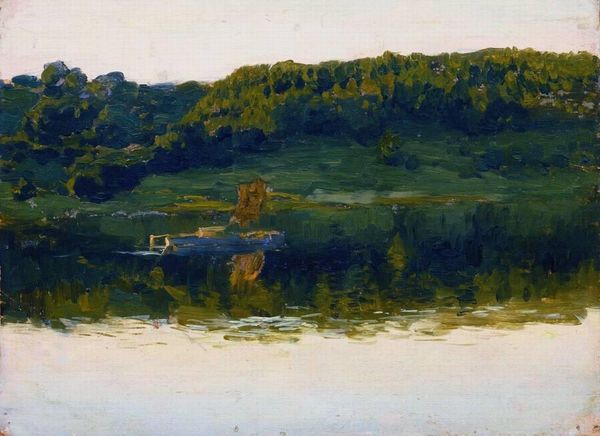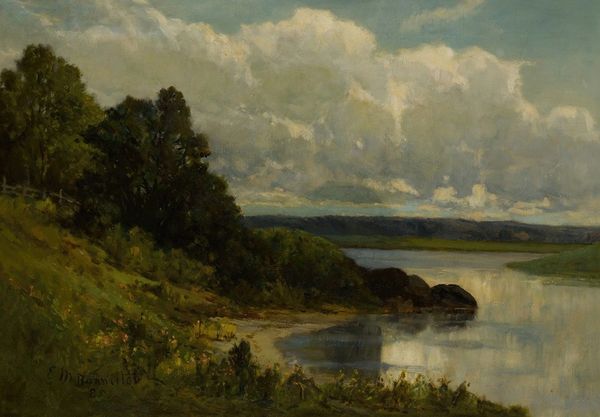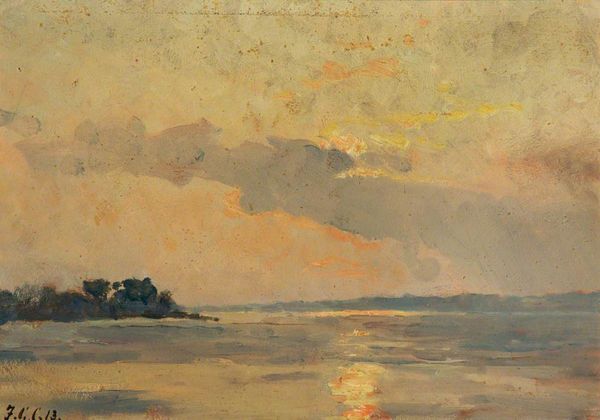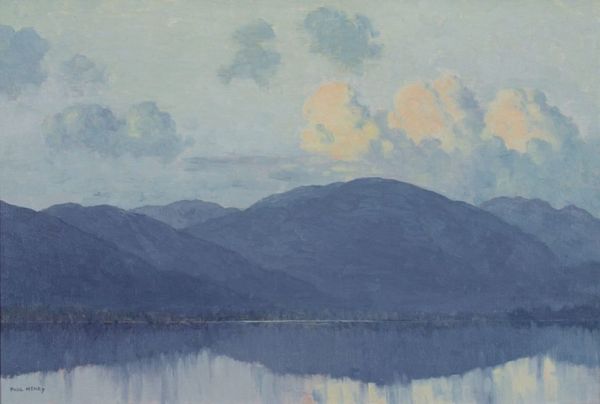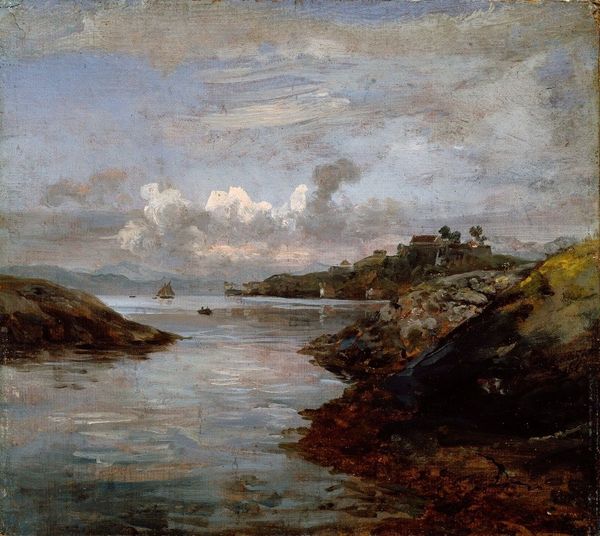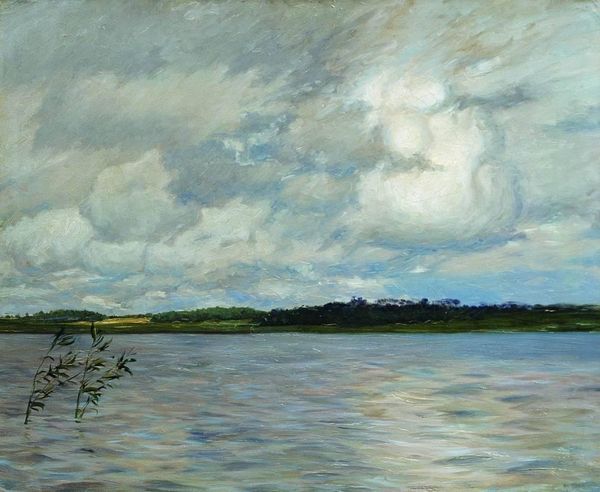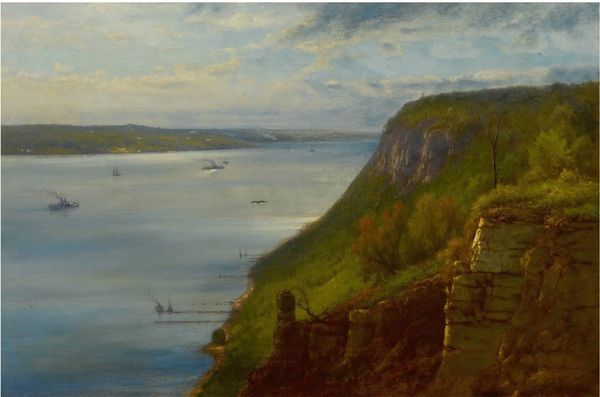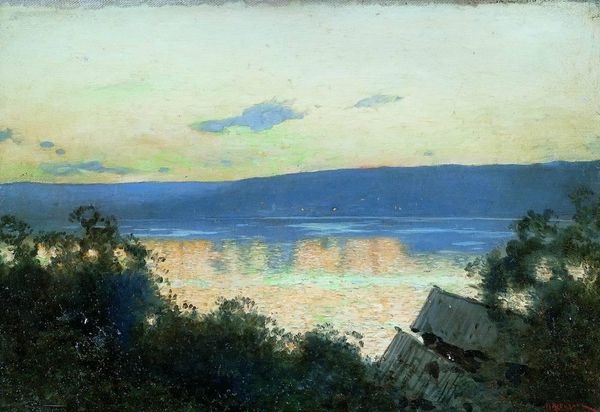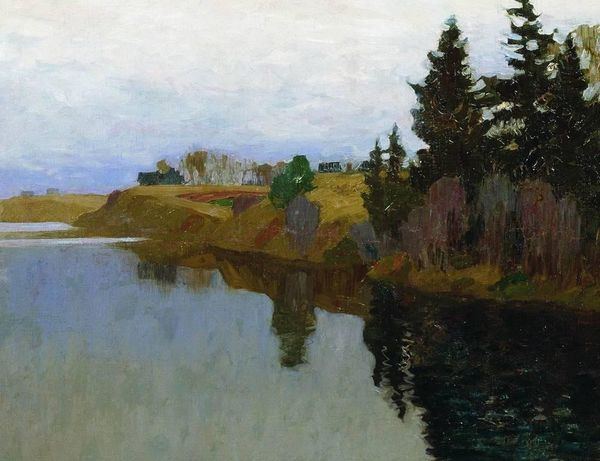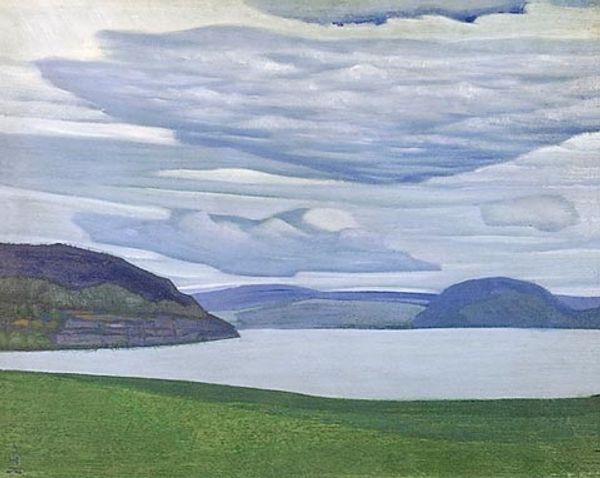
Summer evening. River. 1894
0:00
0:00
isaaclevitan
Chuvash State Museum of Fine Arts, Cheboksary, Russia
Dimensions: 41 x 73 cm
Copyright: Public domain
Curator: Welcome. We're standing before Isaac Levitan's 1894 painting, "Summer Evening. River." currently held in the Chuvash State Museum of Fine Arts. Editor: Immediately, I'm struck by the serenity. The brushstrokes are so fluid; you can almost feel the stillness of the water and the coolness of the air. Curator: Levitan, known for his contributions to Russian landscape painting, captured the intimate relationship between nature and the soul, resonating with late 19th-century nationalistic sentiments tied to nature and rural identity. The location itself plays into that context too; imagine how perceptions of a vast, abundant Russia might influence social ideals and structures of power. Editor: Right, and his use of oil paint here really emphasizes the materiality. The colors are layered and blended, capturing subtle shifts in light. Look how the reflections on the water's surface feel almost tangible. How did Levitan's economic background influence his work and subject matter? Curator: Levitan often grappled with feelings of alienation stemming from his Jewish heritage and difficult economic conditions, finding solace in portraying nature's beauty in works that captured not just the aesthetics but the essence of rural Russia and a collective yearning for national belonging, a place where everyone, irrespective of their cultural background or social standing, can find refuge. Editor: Yes! There’s an almost melancholic mood, created by those darker tones along the lower bank of the river contrasted with the luminosity in the sky, almost as if he’s hinting at broader struggles against exploitation of land, or exclusion from material prosperity. What kind of landscape, say what type of labor do you imagine is sustained by this river? Curator: Precisely. Through the depiction of an ideal space that seemingly negates these concerns, the art functions as an escapist, nationalizing agent. The river transforms into a borderless space, accessible for anyone, while silently implying the pre-existing inequalities based on ethnicity and social status. It asks us who and what it actually overlooks and who controls access to it. Editor: Well, on close viewing it appears not untouched. Those pink tinged clouds likely evidence atmospheric pollution in that particular industrial moment in Russian history... It brings a different complexity when thinking of the artist engaging with this image to give social critique, not simply create beauty, while highlighting environmental questions about resource distribution. Curator: That kind of contextual perspective brings fresh layers to his approach. Considering that perspective as well deepens how we appreciate it as more than just surface representation, but a mirror reflecting on Russian history's relationship with class, access, and the human impact on our environment. Editor: Absolutely. It reminds us that even seemingly tranquil landscapes hold complex stories about labor, history, and place.
Comments
No comments
Be the first to comment and join the conversation on the ultimate creative platform.
